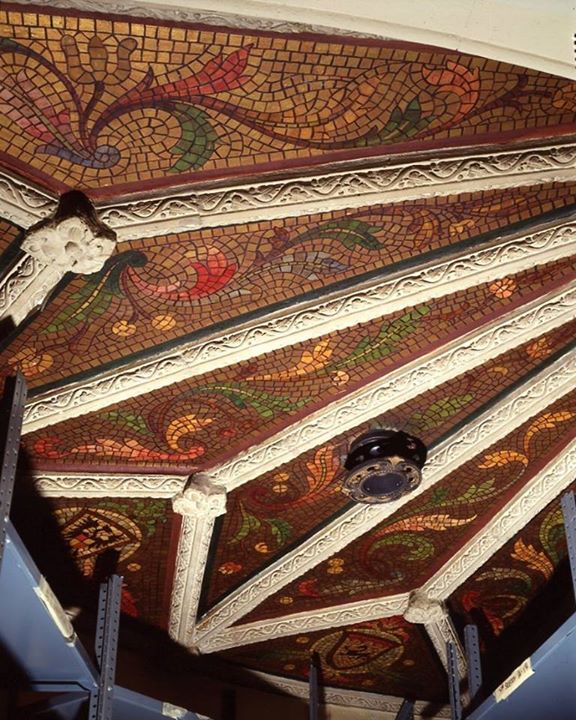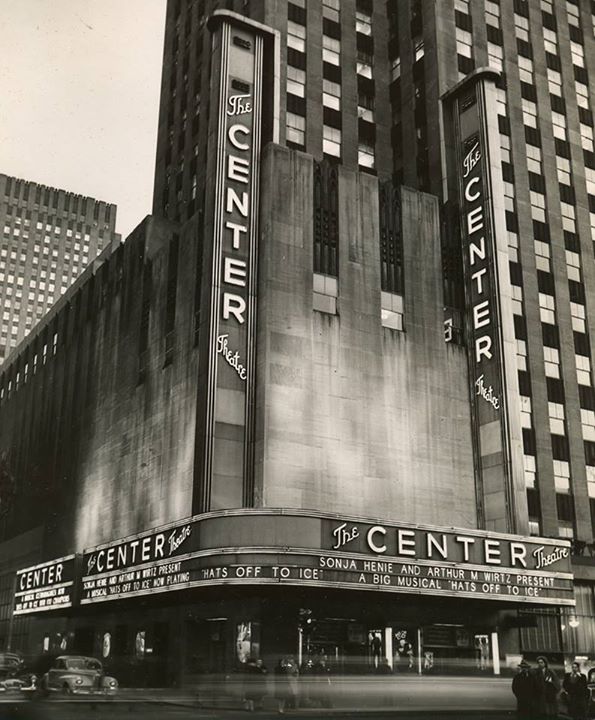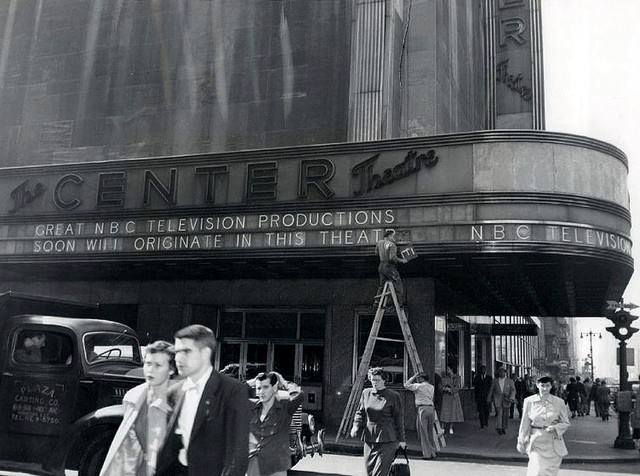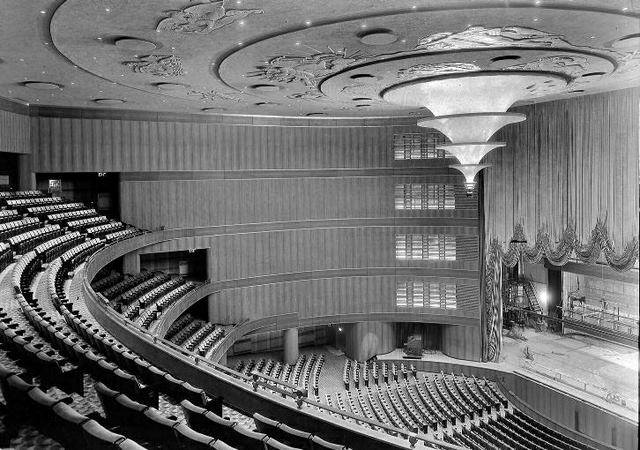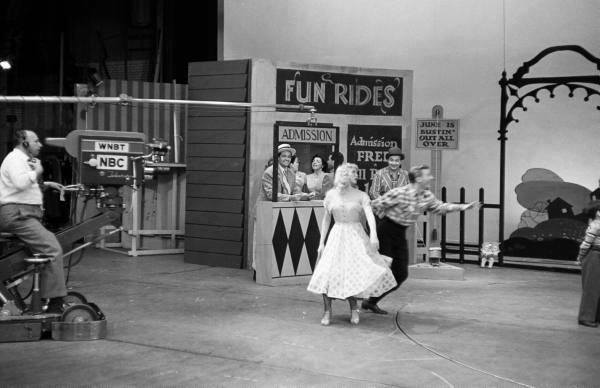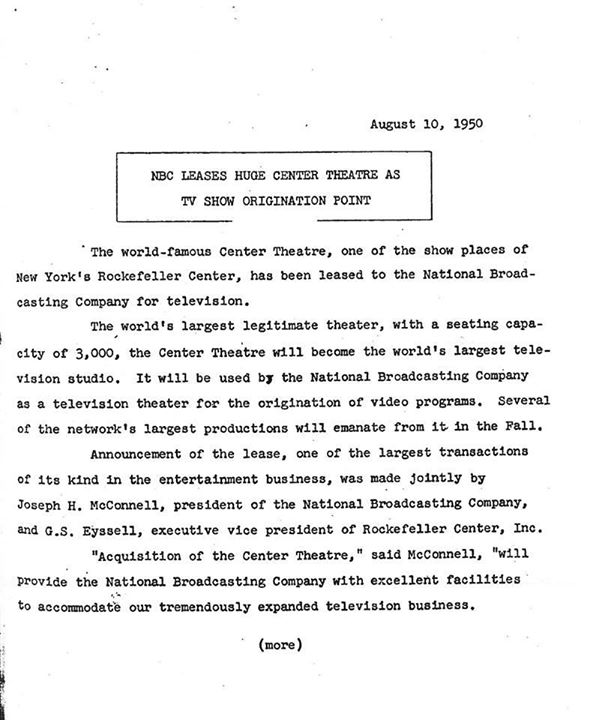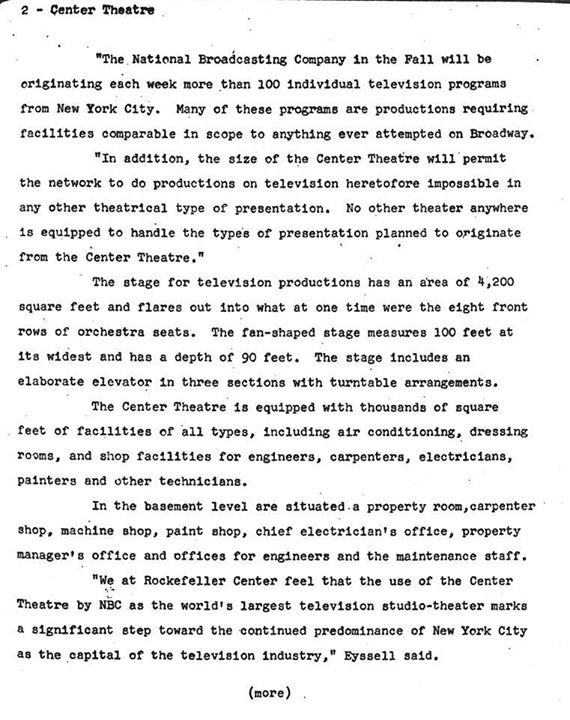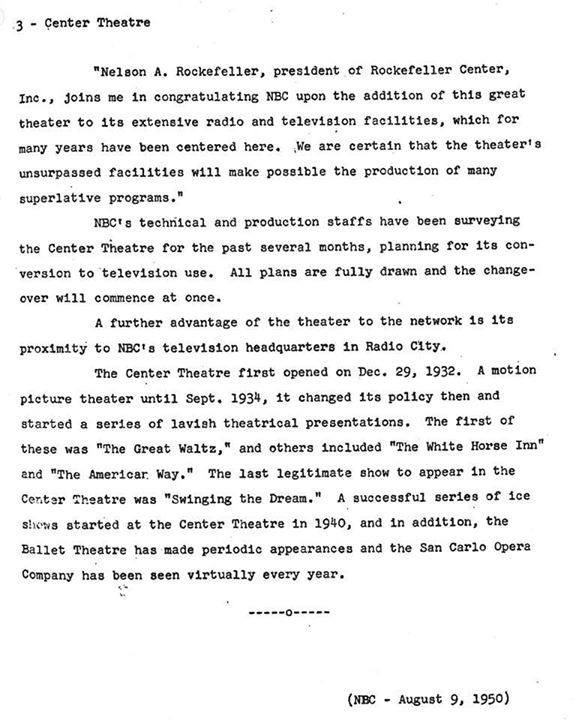- Home
- TV History
- Network Studios History
- Cameras
- Archives
- Viewseum
- About / Comments
Skip to content
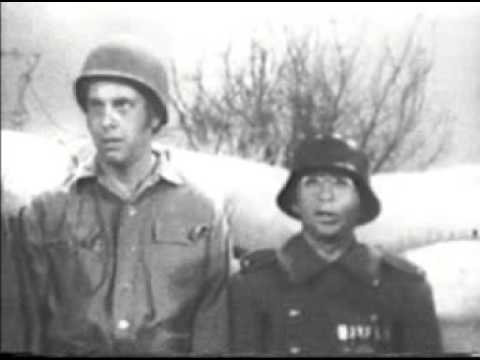
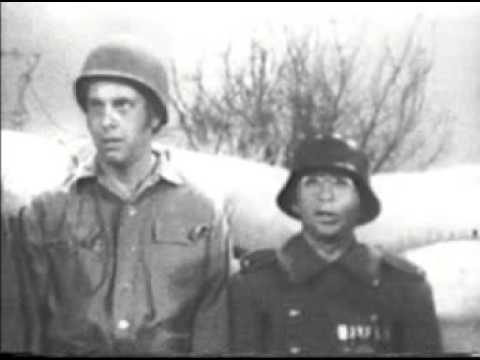
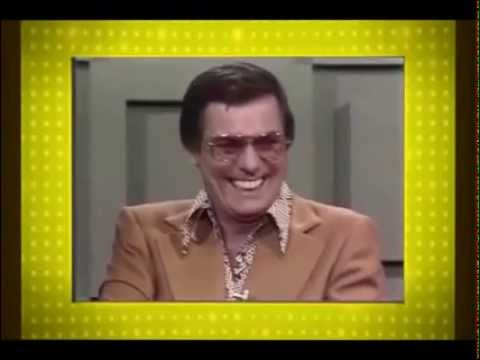
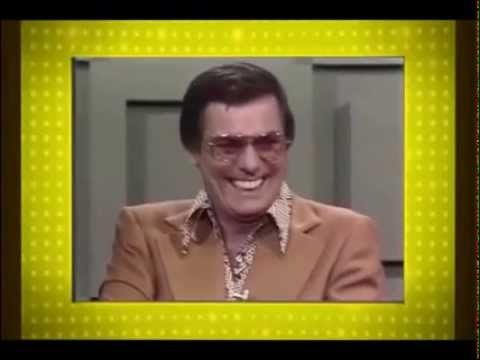
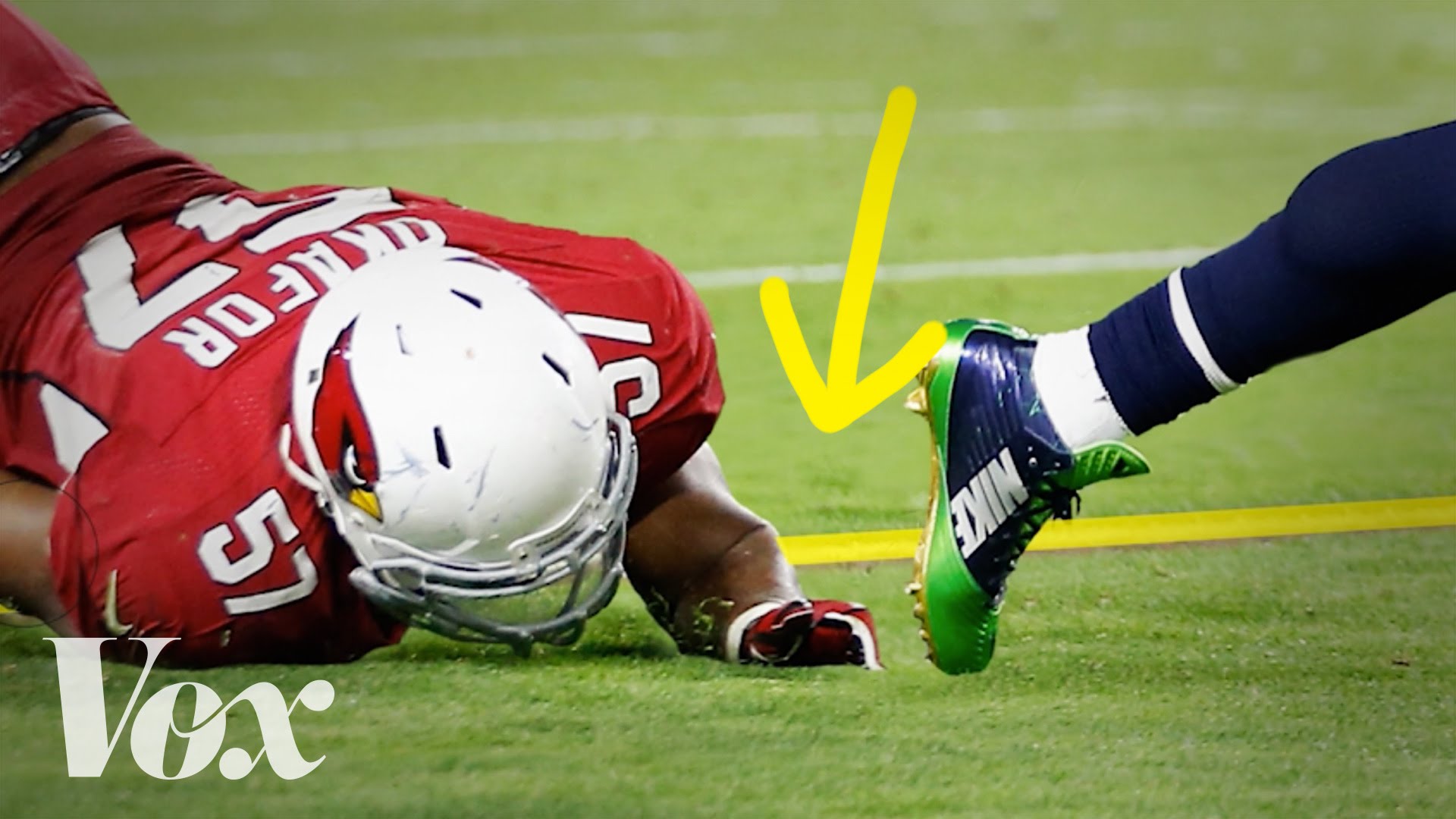
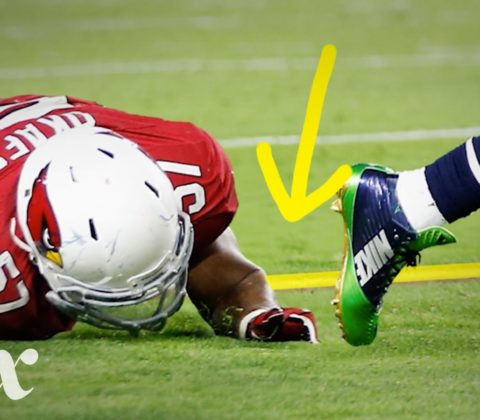


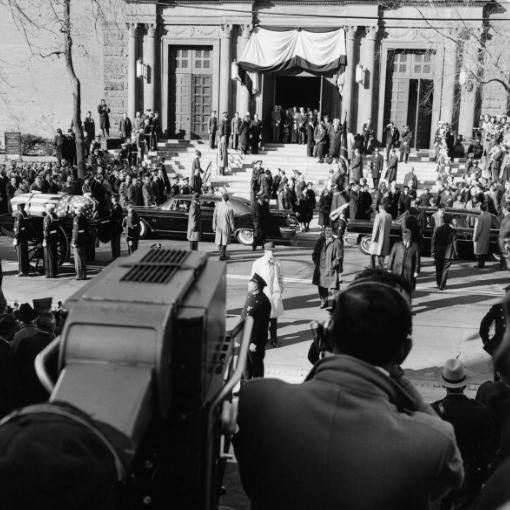





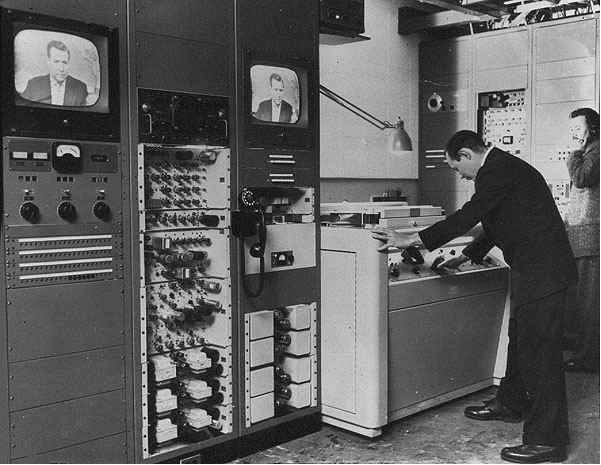
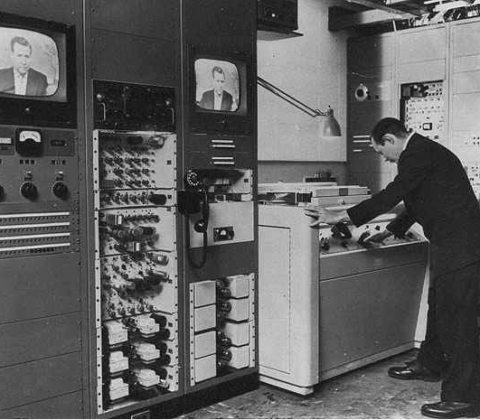
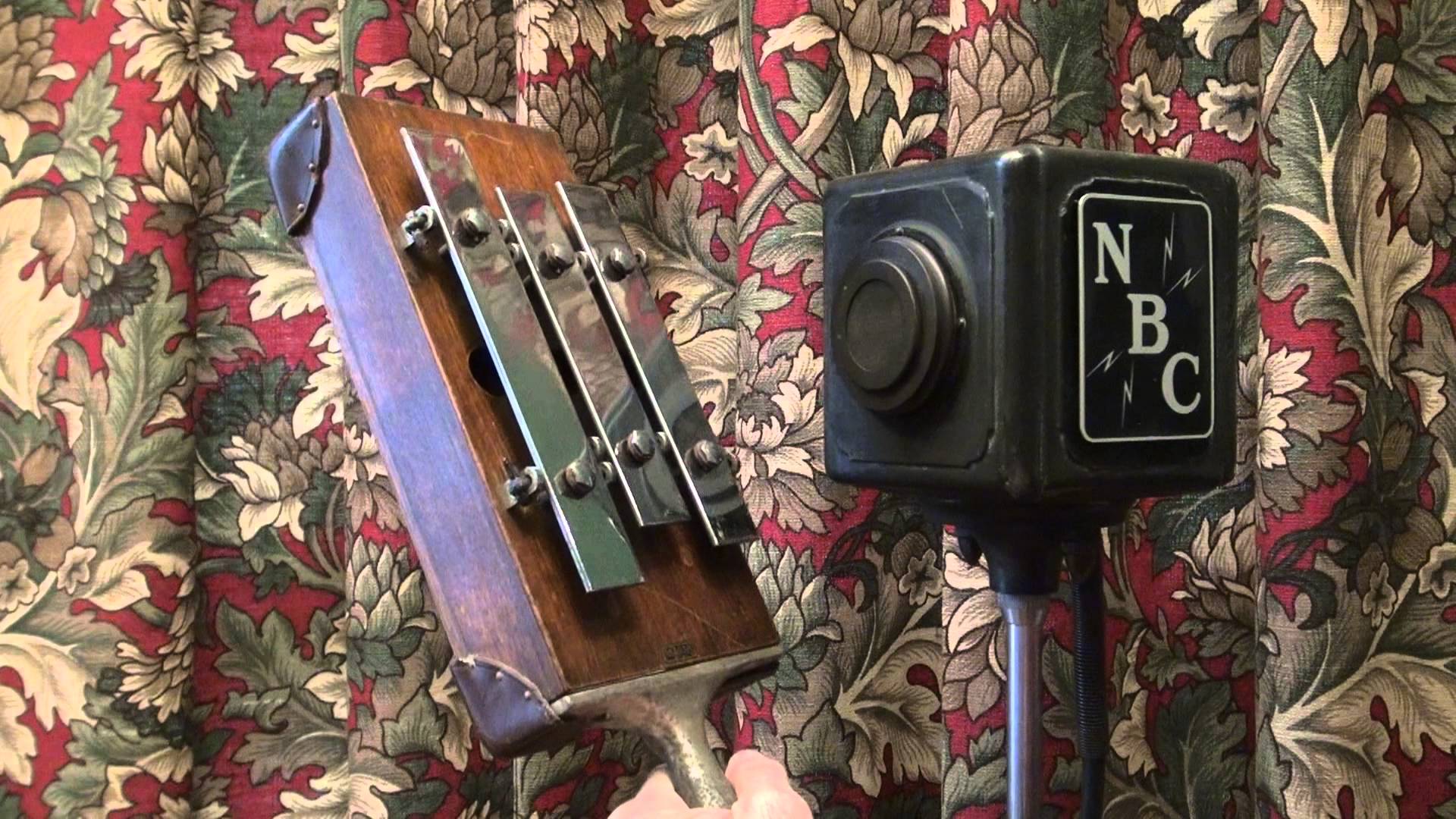



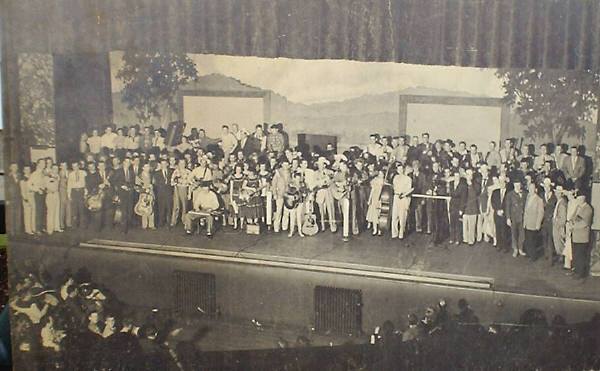
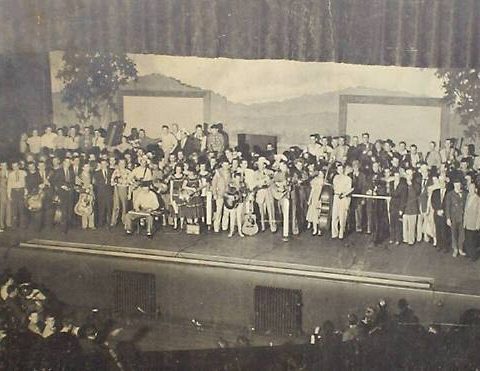
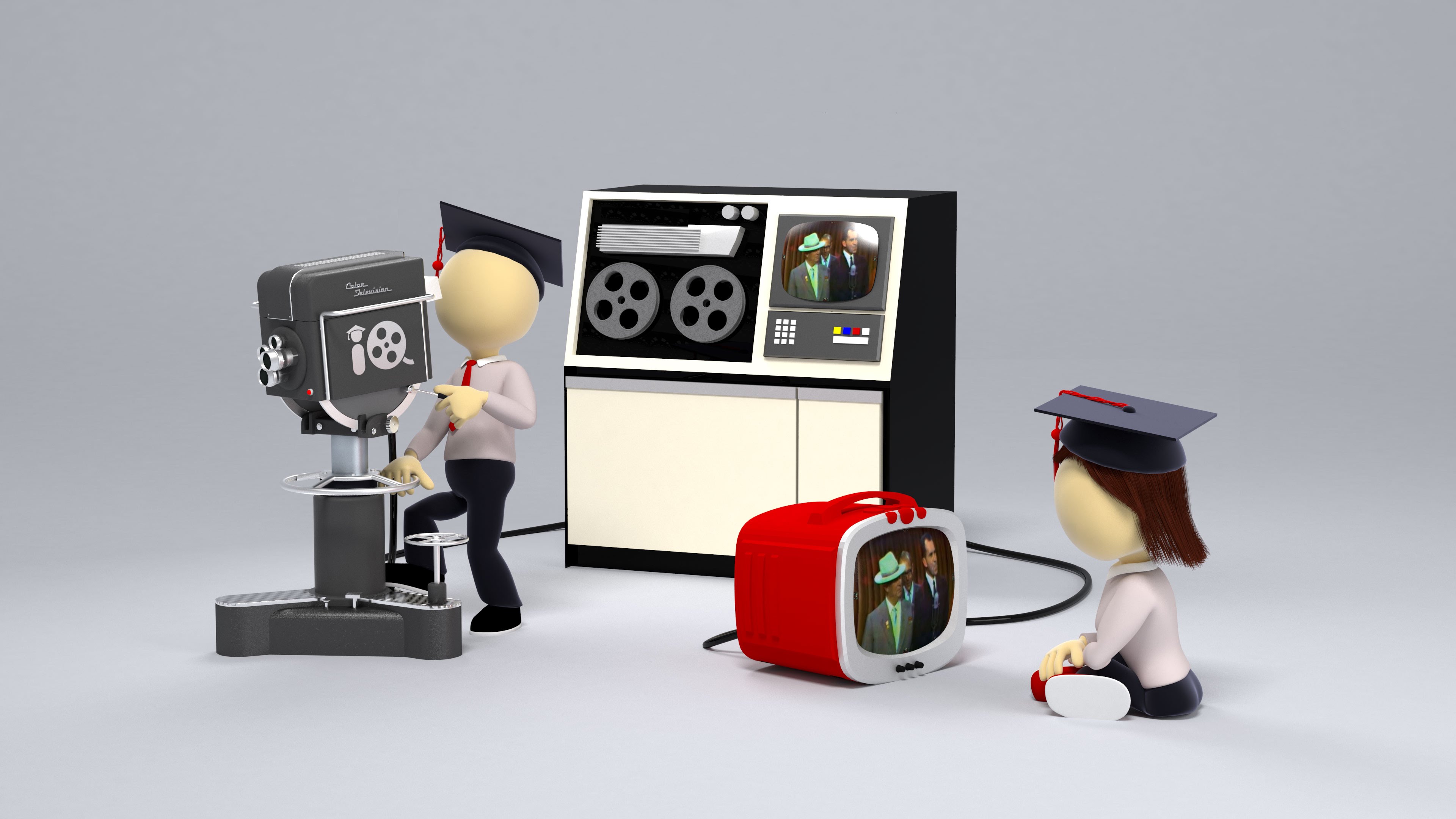



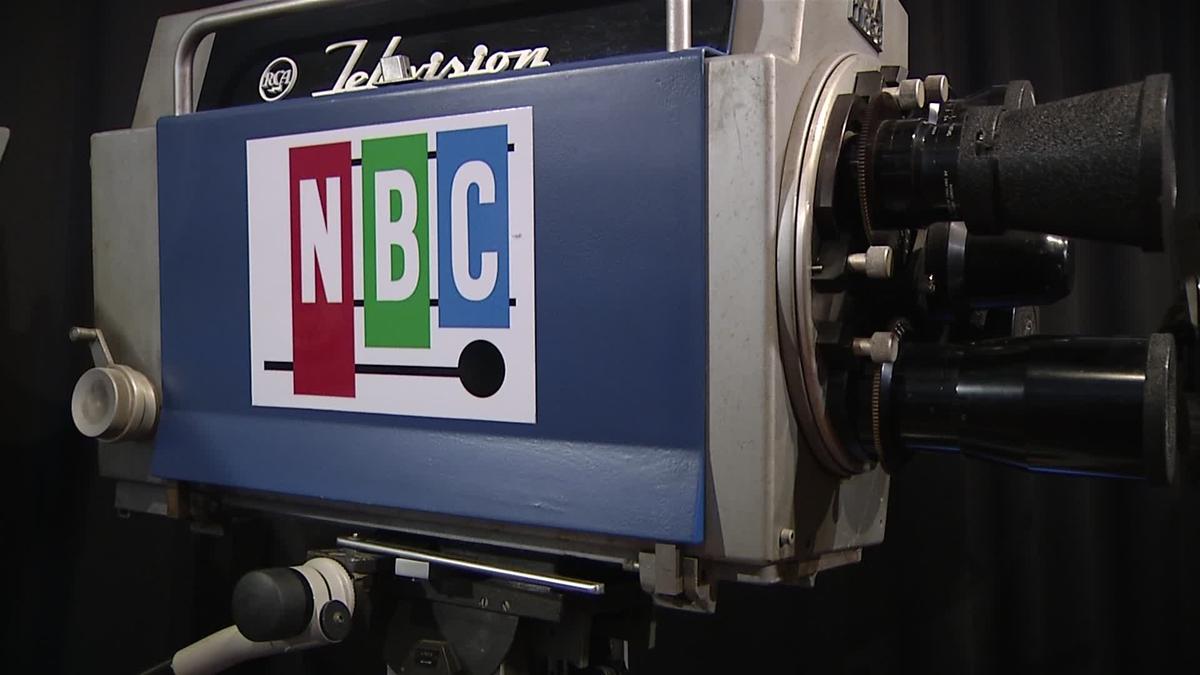







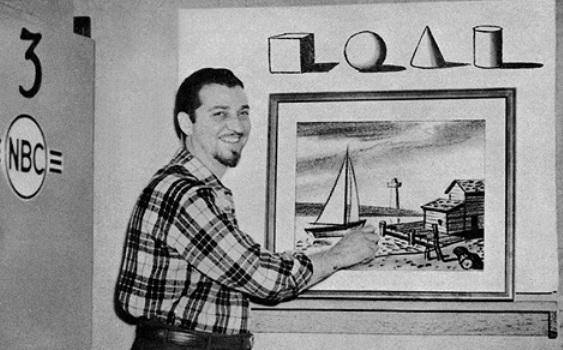
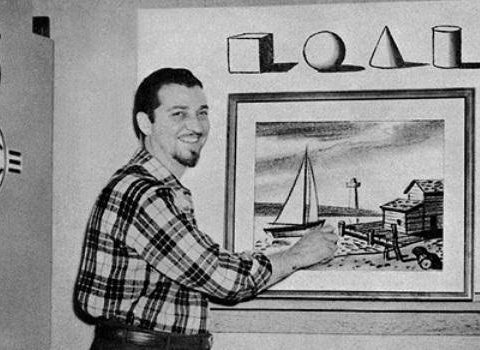




This is the entire edition of RCA’s October 1946 “Broadcast News” magazine that features this brand new camera in a very detailed, multi page story. One of many new Archive items in the new Eyes Of A Generation site, coming soon.
Posts in Category: TV History
Page 9 of 136
« Previous
1
2
3
4
5
6
7
8
9
10
11
12
13
14
15
16
17
18
19
20
21
22
23
24
25
26
27
28
29
30
31
32
33
34
35
36
37
38
39
40
41
42
43
44
45
46
47
48
49
50
51
52
53
54
55
56
57
58
59
60
61
62
63
64
65
66
67
68
69
70
71
72
73
74
75
76
77
78
79
80
81
82
83
84
85
86
87
88
89
90
91
92
93
94
95
96
97
98
99
100
101
102
103
104
105
106
107
108
109
110
111
112
113
114
115
116
117
118
119
120
121
122
123
124
125
126
127
128
129
130
131
132
133
134
135
136
Next » 

“Rowan & Martin’s Laugh In”…Three Backstories Rolled Into One
On December 4, 2016
- TV History
“Rowan & Martin’s Laugh In”…Three Backstories Rolled Into One
(1) Fun (2) Editing on film and videotape (3) The Editor, Art “Jump Cut” Schneider
There is not a better way to illustrate how “Laugh In” was done than to start with this embedded blooper reel, which will be fun and instructive at the same time. As you watch these outtakes on kinescope film, notice the man in the at 1:25 mark with Marcel Marceau (the pantomime king) is the show’s creator George Schlatter.
Believe it or not, the show was simultaneously recorded on black and white kinescope film and color video tape. Using the kinescope footage, Art Schneider (the videotape editor) and George Schlatter cut the show together the way they wanted it to be seen on the air. Only when that process was complete could Art begin to edit the color videotape.
With an average of 400 edits per episode, which no other show had ever attempted, editing “Laugh In” was in a league by itself…as was the editor. As a matter of fact, when Art left NBC after the second year of the show, it took 7 editors to replace him.
To give you and idea how hard it was to edit videotape in those days, here is Art Schneider editing with a Smith Block at NBC. The video will start at the part that features Art, but the whole thing is very good.
Below is a 1989 article from “WRAP Magazine” on Art…
For Art Schneider, A.C.E., it was one of the most memorable moments in his life. Bob Hope was taping a 1965 comedy special
at NBC and Schneider, Hope’s videotape editor since the late 1950s, was standing offstage when Hope called him out. “Most of you don’t know what goes on behind the scenes during the editing of our show,” began Hope. “We have a man in the basement … who fixes all our mistakes, and we’d like to honor him tonight with the annual Bob Hope Show Crossed Scissors Award for Jump Cutting Above and Beyond the Call of Duty”.
To many in the industry, Schneider has always been known as “Jump Cut,” the editor’s editor, racking up screen credits and awards almost since the beginning of television. As an NBC staff engineer from 1951 to 1968, Schneider edited over 500 variety shows, documentaries, music specials, series and news programs, winning four Emmys in the process. His work helped define the medium.
From the start, Schneider’s modus operandi has been to edit quickly, efficiently and seamlessly. To improve video editing in the ’50s-a cumbersome process, which involved the hand-splicing of tape, he worked with his colleagues at NBC to develop the first offline editing process as well as an early time-code system. As chief editor of the network’s “Rowan and Martin’s Laugh In” in the late ’60s, he was notorious for his organization and imagination.
“To edit ‘Laugh In’, we had to adapt the technology to our concepts and not vice versa,” says Creator and Producer George Schlatter. “At the time, video editing was primitive and considered a technician’s job. Art helped change that. It became an artistic job.”
Schneider’s ambitions once lay elsewhere. When he was 18 and a model-airplane enthusiast, he entered the University of Southern California with the goal of becoming an aeronautical engineer. He explains, however, that he couldn’t master the math required for the field. “I changed my major three times before I finally settled on cinema studies,” he recalls. “There’s not much math in that.”
Schneider soon found he had a knack for cutting film, and it was during his senior year that a professor introduced him to an NBC executive searching for a film editor. “The job they offered was simple-editing leaders onto kinescopes, but they didn’t want to spend the time training beginners how to edit,” recalls Schneider. “They wanted someone who already knew how to do it.”
A four-hour job interview led to what would be a 17-year career at the network. Although eventually he became the network’s supervising editor, he began as a “Group 2 Engineer”, hand splicing videotape and film, and operating kinescope machines and cameras because the term “editor” was not officially sanctioned by NBC until the ’60s.
Schneider worked constantly, averaging 40 to 50 shows a year and racking up such credits as 51 Bob Hope shows, three critically acclaimed Fred Astaire programs, and specials starring Judy Garland, Pat Boone, Milton Berle and Jack Benny. “My USC training in cinema really helped,” he says-particularly for specials, “which were tricky. You couldn’t just grind them out like you might on a series. The star wanted to put the best foot forward.”
In 1967, Schlatter, a former colleague from NBC’s Colgate Comedy Hour, approached him with the ‘Laugh In’ pilot. “I thought it had a funny name and a pretty thick script,” Schneider recalls, “but I said, ‘Fine, I’ll do it.’ ” The script was four inches thick, to be exact, and, at a time when 80 edits an hour for video was considered excessively complicated, Laugh-in weighed in at about 400. “It was a gargantuan task,” says Schlatter, “and ‘Laugh In’ may have been the first show on TV whose editor was recognized for the contribution he brought to the whole.”
With its quick blackouts, short sketches and zany music pieces, Laugh-in was an editor’s nightmare. Schneider, with Schlatter at his side, spent three weeks of 20-hour-a-day edits to produce the pilot. “At the end of the first assembly [which took five days], George didn’t like what he saw. He sat back and cried, ‘What have I wrought?’ ” recalls Schneider, who wound up recutting the program five times. “After the fifth, George was satisfied, but I was still bothered by something that didn’t quite click. I couldn’t sleep, thinking about it.” Then, as he lay in bed, he had an inspiration:
He would add a tag scene after the closing credits…a discarded piece of footage of Arte Johnson as a Nazi saying, “Verrrry interesting.” Not only did Schlatter love the touch, the bit became a catchphrase of the series.
In 1968, Schneider left NBC to form, with Schlatter, Burbank Film Editing (where he continued to work on ‘Laugh In’). Schneider left in 1970 to work at CFI, where he stayed until 1976 and helped develop the first CMX 300 on-line editing system. From there he freelanced on a variety of projects, including off-net hours for syndication and documentaries on pollution. In addition, he served on the board of the Academy of Television Arts and Sciences; became a member of the SMPTE education committee; and began writing (over 50 articles) and lecturing on his profession.
“To be successful,” Schneider concludes, “you have to be very, very dedicated. And you have to work your butt off.”
Enjoy and share! -Bobby Ellerbee


Just For Fun…Be Ready To LOL!
On December 3, 2016
- TV History
Just For Fun…Be Ready To LOL!
I don’t know if all of these clips made it to air or not, but I’m glad they didn’t die on the tape room floor. These are all great, but John Davidson gets things rolling, and at 3:00, Marty Allen has one of my all time favorite answers. Enjoy and share! -Bobby Ellerbee


How Football’s Magic Yellow Line Technology Works…Two Videos
On December 2, 2016
- TV History
How Football’s Magic Yellow Line Technology Works…Two Videos
Here are two videos to lay out how the yellow first down line is applied to live action on the field. This first one is a good history and general overview of the process.
https://www.youtube.com/watch?v=1Oqm6eO6deU
This second one shows us how the equipment is linked to the cameras in the stadium and some of the software used in the truck.
https://www.youtube.com/watch?v=Vh9af_gXxlM
Hope your team wins this weekend! -Bobby Ellerbee
The clever engineering behind the virtual first-down line. Subscribe to our channel! http://goo.gl/0bsAjO — Since the late 1990s, the virtual yellow line h…


Grant Tinker, former CEO of NBC, dies at age 90
On December 1, 2016
- TV History
Remembering Grant Tinker….
Grant Tinker, former CEO of NBC, dies at age 90
Grant Tinker, former chairman and CEO of NBC and architect of many successes for the network, has died at age 90. He was also a former husband of actress Mary Tyler Moore.


How TV Covered Death Of President Kennedy…Broadcasting Magazine
On December 1, 2016
- TV History
How TV Covered Death Of President Kennedy…Broadcasting Magazine
Here is the The December 2, 1963 issue of Broadcasting, which includes an article over 10 pages deep (starts on page 36) that gives us a rare look at how the networks swung into action after receiving the news from Dallas.
The main article covers many of the details and back stories of the efforts at ABC, CBS and NBC to get their news departments and crews up and running for this marathon coverage. There are also other single articles on associated stories, like “The Dimension President Kennedy Added To Television”, which is a tribute to his use of TV in all of his campaigns and in his press conferences. -Bobby Ellerbee


The Hard-Working Italian Origins of the Rockefeller Center Christmas Tree
On November 30, 2016
- TV History
TONIGHT! Tree Lighting At 30 Rockefeller Plaza + Some Surprises
From 8 – 9 tonight, NBC carries the holiday tradition nation wide, live from Rockefeller Plaza…well…almost live. I have been told that Dolly Parton’s performance was done months ago, but great care was taken to make it a seamless fit into tonight’s show, so keep a sharp eye out.
As for the first ever 30 Rock Christmas tree…we can thank Cesidio Perruzza, an Italian excavation worker who helped dig the foundation in 1931. Merry Christmas! -Bobby Ellerbee
Nearly lost to history are the tree’s origins with men who worked in construction, most of them Italian immigrants, who were glad for a job during the Depression.


November 30, 1927…The Birth Of Hallowed Broadcast Ground
On November 30, 2016
- TV History
The Original Mosaic Look Ceiling and Today’s Colbert Dome Artistry
When The Hammerstein Theater (now, The Ed Sullivan Theater) opened November 30, 1927, this black and white photo shows what the ceilings of the auditorium and lobby areas looked like. Below, you’ll see it in color!
The first nine years at 1697 Broadway were not easy, and the legitimate theater use only lasted a few years. As the Great Depression took its toll, Billy Rose took over the theater in 1933 and made it a huge nightclub, with tables and chairs where the theater seating used to be.
Finally, some stability came in 1936 when this facility became CBS Radio Playhouse #3. The first radio show from here was “Major Bowes Amateur Hour”. Ironically, the last radio show, and the first television show from here were amateur hour take offs… they were both the “Arthur Godfrey’s Talent Scouts” shows.
In the fall of ’48, in a LIFE Magazine story on his talent scout show, they predicted, “Godfrey will probably be on television very shortly,” and the prophecy came true on December 6, 1948.
After two years on the radio, “Arthur Godfrey’s Talent Scouts” became a regular show on CBS-TV. It was simulcast on radio from the studio it had been in those two years…CBS Radio Theater #3 which, when converted to television became Studio 50. This was the first television show to originate from Studio 50.
From then on, this has been home to some of the greatest talent ever seen on television. From Jackie Gleason and Ed Sullivan’s shows to David Letterman and now Colbert, all the greats have performed on this stage.
Thanks to our friend Nick Van Hoogstraten, author of “Lost Broadway Theaters,” the color image shows a small part of the hand painted mural work in 1987. Just to be clear, the “tile/mosaic” effect is painted on and is not real tile. This survived the paint overs by being inside a tape storage closet. The paint over came in 1960. The black and white photo is how the theater looked when it opened -Bobby Ellerbee
2023 ADDENDUM: Bob Valinski put in the new “Colbert Era” dome artistry and here is what he had to say about this test photo taken before the show debuted, “This is what the dome looked like in Sept 2015 when we put in an Orad engine to feed the 4 projectors aimed at the ceiling. A lot of mind bending calculations had to be used to ensure that the 4 SDI outputs line up seamlessly when projected on the 3D dome. The engine could even take a live SDI input and render to the 4 projector outputs.”



November 30, 1956…A Videotape Milestone
On November 30, 2016
- TV History
November 30, 1956…A Videotape Milestone
On this day in 1956, at Television City, CBS made broadcast history when they achieved the first ever videotape delay of east coast programming. The show was ‘The Evening News With Douglas Edwards’, and after recording the live feed coming down the network line from New York, the program was played back three hours later for the west coast.
In the photo, we see CBS Engineer John Radis at the Ampex VRX-1000 recording the show. Just in case, a kinescope of the newscast was rolled simultaneously, but fortunately, it was not needed.
This VRX-1000 is one of only 16 hand-built machines Ampex rushed to produce after debuting the VTR eight months before.
It would take over a year for CBS New York to get videotape machines due to a huge backlog, even though the networks got priority. In early 1958, 14 VR 1000 went into service at CBS Grand Central. NBC too had the bulk of their machines on the west coast but both CBS and NBC had two VTRs in New York which were mostly used for testing and engineering purposes.
This historic machine was retired in 1978. Early on, it had been fitted with RCA color modules as Ampex and RCA traded technology rights. RCA had developed color recording in 1954 and allowed Ampex to use it if they would allow RCA to use the Qaud recording head. -Bobby Ellerbee


November 29, 1929…The NBC Chimes Sound For The First Time
On November 29, 2016
- TV History
November 29, 1929…The NBC Chimes Sound For The First Time
In July of 1921, RCA bought WJZ from Westinghouse, and five years later, in July of 1926, they bought WEAF from AT&T. The National Broadcasting Company was incorporated by RCA on September 8, 1926, and two months later, on November 15, the NBC Radio Network debuted.
The demand for a network service among local stations was mounting so rapidly, that less than two months after its first national broadcast, NBC split its programming into two separate networks…the Red (WEAF) and the Blue (WJZ) networks, to give listeners a choice of different program formats. That happened on January 1, 1927.
In those early days, at the end of a programs, the NBC announcer would read the call letters of all the NBC stations carrying the program. As the network added more stations this became impractical and would cause some confusion among the affiliates as to the conclusion of network programming and when the station break should occur on the hour and half-hour.
Some sort of coordinating signal was needed to signal the affiliates for these breaks and allow each affiliate to identify. Three men at NBC were given the task of finding a solution to the problem and coming up with such a coordinating signal. These men were; Oscar (O.B.) Hanson, from NBC engineering, Earnest LaPrada, an NBC orchestra leader, and Phillips Carlin, an NBC announcer.
During the years 1927 and 1928 these men experimented with a seven note sequence of chimes, G-C-G-E-G-C-E, which proved too complicated for the announcers to consistently strike in the correct order. Sometime later they came up with the three note G-E-C combination.
These three notes were first broadcast on NBC November 29, 1929 and were struck at 59 minutes 30 seconds, and 29 minutes 30 seconds past the hour. Now, the NBC audio logo is the most famous commercial sound in the world. -Bobby Ellerbee
https://www.youtube.com/watch?v=fnWfNZc0EtY
Degan “Studio” Chimes. Recorded through a RCA 4AA condenser microphone of the same vintage, circa 1931. The chimes were brought up to their original quality …


A Fun Look At The History of Hollywood’s Visual Trickery Processes
On November 28, 2016
- TV History
A Fun Look At The History of Hollywood’s Visual Trickery Processes
From 1898 till now, here is how special effects put the magic into movies like “The Invisible Man” ,”King Kong”, “Mary Poppins”, and more. From black and white matting, to yellow and blue screens, back to sodium vapor yellow and on to the green screens, we see the different processes and learn how each one worked. Enjoy! -Bobby Ellerbee
https://www.youtube.com/watch?v=H8aoUXjSfsI
Go inside the history of the travelling mattes (now called chromakey) and learn the history of visual trickery used by filmmakers from the earliest filmmaker…


November 28, 1925…”The Grand Ole Opry” Was Born
On November 28, 2016
- TV History
November 28, 1925…”The Grand Ole Opry” Was Born
“The Grand Ole Opry” started as the “WSM Barn Dance” in the new fifth-floor radio station studio of the National Life & Accident Insurance Company in downtown Nashville, Tennessee on November 28, 1925.
On October 18, 1925, WSM management began a program featuring “Dr. Humphrey Bate and his string quartet of old-time musicians.” On November 2, WSM hired long-time announcer and program director George D. “Judge” Hay, an enterprising pioneer from the “National Barn Dance” program at WLS Radio in Chicago, who was also named the most popular radio announcer in America as a result of his radio work with both WLS in Chicago and WMC in Memphis.
Hay launched the “WSM Barn Dance” with 77-year-old fiddler Uncle Jimmy Thompson on November 28, 1925, which is celebrated as the birth date of the Grand Ole Opry.
The name “Grand Ole Opry” came about on December 10, 1927.
The Barn Dance followed NBC Blue Network’s “Music Appreciation Hour”, which consisted of classical music and selections from the Grand Opera genre. Their final piece that night came with comments from the conductor who stated that “there was no place in the classics for realism”.
In response to this Judge Hay quipped, “Friends, the program which just came to a close was devoted to the classics, and the host told us told us that there is no place in the classics for realism. However, from here on out for the next three hours, we will present nothing but realism. It will be down to earth for the ‘earthy’.”
He then introduced the man he dubbed the Harmonica Wizard…DeFord Bailey who played his classic train song “The Pan American Blues”. After Bailey’s performance Hay commented, “For the past hour, we have been listening to music taken largely from Grand Opera. From now on we will present the ‘Grand Ole Opry'”. -Bobby Ellerbee


The Story Of Videotape & Editing…Part 1 (of 2)
On November 27, 2016
- TV History
The Story Of Videotape & Editing…Part 1 (of 2)
Tomorrow, we’ll see how digital editing works, but today…this is a great history of how television’s need for time shifting, and delayed broadcast for time zones encouraged the development of kinescope and videotape recording.
This is well done and told in layman’s terms so everyone can understand the very interesting paths the process of recording and editing video have traveled. -Bobby Ellerbee
https://www.youtube.com/watch?v=TIVYeyWHajE
Trace the history of modern day film editing – starting with electronic engineers developing solutions for capturing and editing television through to the fi…


Story Of Videotape Editing…Part 2 (of 2)
On November 27, 2016
- TV History
Story Of Videotape Editing…Part 2 (of 2)
Yesterday’s first installment was pretty easy to follow, even for laymen, but this lesson on digital editing is more of a challenge. This does however have an interesting timeline that reminds us of when new developments came into play.
I’m posting a second video in a few minutes that is a lot more fun…it is all about the history of special effects in film making, so keep and eye out for it. -Bobby Ellerbee
https://www.youtube.com/watch?v=dhHQw5GrwxU
We pick up the story from the electronic engineers of television in part 1, to computer scientists, mathematicians and programmers as we explore the advancem…


Texas Museum of Broadcasting Opens in Kilgore
On November 26, 2016
- TV History
My “Conrad” In Arms….Chuck Conrad & His New Texas TV Museum
Impressive in every way! From the display, to the abundance of vintage cameras and tape equipment, to the Dumont Cruiser restoration, to Chuck’s attitude, The Texas Museum of Broadcasting and Communications in Kilgore, is true gift to us all.
This is a new story from the Dallas/Ft. Worth station that many of us still refer to as WBAP, and it is the best report I have seen so far on Chuck’s labor of love. I would like to have a brick and mortar museum like this, and if I did, I would do it the way he’s done it. I chose the virtual museum route.
Later in the story, Chuck says something I can relate to 100%. When it comes to becoming a custodian of rarities, restoring and preserving our broadcast history…he says “somebody’s got to do it”.
“I think a lot of things in life are like that, when you come across things and know somebody’s got to do this, and you are the person who can…go do it”.
That is why I created Eyes Of A Generation in 2006. Congratulations Chuck! -Bobby Ellerbee
http://www.nbcdfw.com/news/local/Texas-Museum-of-Broadcasting-Opens-in-Kilgore-403062026.html
Texas Museum of Broadcasting Opens in Kilgore
“I can’t deny it! I mean I woke up one day and noticed I had over 50 TV cameras and then you go, ‘well, what am I going to do with this stuff?’” asked Conrad. His answer: open a museum.


November 25, 1950…Center Theater, World’s Largest New TV Studio
On November 25, 2016
- TV History
November 25, 1950…Center Theater, World’s Largest New TV Studio
The Center Theater was Radio City Music Hall’s little sister and when it was converted by NBC for television was “the world’s largest television studio”. It’s big sister seated 6,000, and while the Center seated 3,000, it was just as opulent and a block away at 1230 Sixth Avenue. It is the only original Rockefeller Plaza structure ever demolished, which happened in 1954 to make way for an office tower, built for U S Rubber.
There is some interesting information In the attached 3 page NBC press release from August of 1950 that announces NBC’s lease.
The first television shows were actually done here in the late ’40s when NBC did remote broadcasts of several of the ice shows which were performed on the Center’s specially constructed “Sonja Henie Ice Stage” . November 25, 1950 is the theater’s debut as a television studio (with it’s own control room) and the first show was a Radio/TV simulcast of ‘The Voice Of Firestone’.
I think ‘The Colgate Comedy Hour’ also moved here at the first of December, and in the last photo before the NBC Press release, you see occasional host, Broadway dancing star Wayne Lamb on stage with the Center’s large turntable in views. At this link is a 1954 episode of ‘The Colgate Comedy Hour’ live from The Center and notice the famous freezable ice stage is still intact and in use for an appearance of none other than Sonja Henie.
By 1952, ‘You Show Of Shows’, which began in the International Theater, moved to The Center for it’s last two seasons.
The first photo says it all about the location…a block up is Radio City Music Hall and between them is NBC’s 30 Rock headquarters. Just to the left of the Center’s marquee is the famous Hurley’s Bar, nestled against NBC at the corner of 6th Avenue and 49th Street. Radio City is at 50th Street. In that photo, the construction is the demolition of the elevated train tracks that once ran up 6th Avenue. -Bobby Ellerbee


THE NEW EYES OF A GENERATION WEB SITE IS UP & RUNNING!
On November 24, 2016
- TV History
THE NEW EYES OF A GENERATION WEB SITE IS UP & RUNNING!
Just in time for Thanksgiving browsing, the all new site ready!
Please share this news with your friends, and let your non Facebook friends know with an email. Now everyone can comment on the new site, and it is very easy. You can sign in with your FB account, or do a simple one time registration…or just visit the site and look around with no sign ins. There is a LOT to see!
My thanks to all of you for your years of interest and support…it is greatly appreciated! This is for you, and all that come after us.
Building the new site would not have been possible without the long hours of effort from our great webmaster, Dave Donaldson who directs the morning news at WTOL in Toledo, and Dr. Jodie Peeler, Professor of Communications at Newberry College. When I was too afraid of the daunting task, she pulled me through. Dave’s ingenuity allowed us to do something no other site has ever done…we are the first to capture all of our Facebook post archives, complete with comments, and import them into our own server. Other sites display FB posts, but the posts are still physically in FB…ours are not.
HAPPY THANKSGIVING TO YOU! -Bobby Ellerbee, Dave Donaldson, Jodie Peeler


Happy Thanksgiving Everyone!
On November 24, 2016
- TV History
Happy Thanksgiving Everyone!
Especially to those pros among us that are “in the kitchen” whipping up live television for us today. From parades and football, to local crews newsing, thanks for being there! Add your pictures of your day here, and don’t worry, we’ll save you some turkey. -Bobby Ellerbee


Another TV History Surprise…Jon Gnagy, One Of TV’s First Stars
On November 23, 2016
- TV History
Another TV History Surprise…Jon Gnagy, One Of TV’s First Stars
Before Howdy Doody, Lucy, Berle, Kukla, Fran or Ollie, there was Jon Gangy.
His TV career began May 13, 1946, in NBC Studio 3H (pictured here) on a trial video version of NBC’s “Radio City Matinee” radio program, which was carried on NBC’s three market network to New York City, Schenectady and Philadelphia.
Gnagy was the opener of the show which also featured a comic, a cooking demonstration, and a woman who modeled hats. When Gnagy picked up his crayon to begin, he found the lights had melted it into a useless glob, so he switched to charcoals. For seven minutes, he showed his viewers how to draw an old oak tree.
There were not many television sets in use then, but the creators of television knew Gnagy was onto something.
Vladimir Zworykin, who had invented the cathode ray tubes that made television transmission and reception possible, was there and rushed over to shake Gnagy’s hand. RCA and NBC President David Sarnoff called to congratulate him. The show’s producer exclaimed that his segment was “pure television.”
By November, Gnagy had his own 15-minute NBC series, “You Are An Artist”, airing on Thursday nights in prime time. In The New York Times, critic Jack Gould praised Gnagy’s ”thoroughly engaging setside manner.” Writing in The Philadelphia Inquirer, Merill Panitt, later to become editorial director of TV Guide, said that ”Gnagy’s Midwestern easy-going manner conceals the hours of rehearsal and gives an air of spontaneity to the proceedings.”
And while Gnagy could never boast Uncle Miltie’s influence, he did have an impact. At the height of his popularity, Manhattan bartenders handed out paper and pencils to patrons who put down their cocktails to sketch along with ”America’s Television Art Instructor.”
It didn’t last, of course. Like so many early TV staples, “You Are An Artist” was cancelled in 1950 to make way for shows with broader appeal as the number of sets and stations multiplied, BUT, there is more to come!
The video above is what most of us remember…the syndicated series, “Learn to Draw”, that Gnagy subsequently co-produced and marketed to local TV stations to fit into their Saturday or afternoon schedules alongside the likes of Meet Mr. Wizard and Howdy Doody.
His show remained on television until 1971 and in syndication on PBS beyond that. He received no royalties, but now had a platform from which to promote his lesson books and art kits. Doubleday sold a copy of his book to one out of every fourteen television set owners in the United States.
His art supply company moved fifteen-million art kits. He even spawned some successful imitators, most notably Bob Ross, whose show “The Joy of Painting” ran on PBS from 1983 to 1994.
Believe it or not, you can still buy Gangy’s kits today, complete with the gum eraser many of us ate.
It’s impossible to know just how many artists were inspired by Gnagy’s show, but here is a quote from someone who was. Andy Warhol said, “I watched his show every week and I bought all his books.” -Bobby Ellerbee

November 22, 1963: A President Falls…TV News Ascends
On November 22, 2016
- TV History
November 22, 1963: A President Falls…TV News Ascends
Until the day President Kennedy was assassinated in Dallas, breaking news coverage had been the domain of the print media, but the story of that weekend unfolded so fast, only live television could deliver both the story and the unforgettable images.
During that 4 days of nonstop, commercial free broadcasting, Americans came to accept TV news for its unique ability and trustworthy presentation.
What follows is a very interesting account of how the UPI and AP wire reporters in the motorcade fought to cover the story. http://ajrarchive.org/article.asp?id=1672
After that awful day in Dallas, no one and nothing in this country was ever the same again…especially television news. -Bobby Ellerbee

Introducing The RCA TK30: Television’s First Workhorse Camera
On November 21, 2016
- TV History
Introducing The RCA TK30: Television’s First Workhorse Camera
This is the entire edition of RCA’s October 1946 “Broadcast News” magazine that features this brand new camera in a very detailed, multi page story. One of many new Archive items in the new Eyes Of A Generation site, coming soon.
The cover page photo is in relation to the first ever use of this camera at the Joe Lewis – Billy Conn boxing match held at Yankee Stadium. On page 20, you can read about RCA’s new improved microwave system that help the new TK30 images.
Even after taking in these feature stories, it’s fun to browse the rest of this issue for an interesting look back at audio boards, transmitters and more technology that, at the time, was “state of the art”. -Bobby Ellerbee
Page 9 of 136
« Previous
1
2
3
4
5
6
7
8
9
10
11
12
13
14
15
16
17
18
19
20
21
22
23
24
25
26
27
28
29
30
31
32
33
34
35
36
37
38
39
40
41
42
43
44
45
46
47
48
49
50
51
52
53
54
55
56
57
58
59
60
61
62
63
64
65
66
67
68
69
70
71
72
73
74
75
76
77
78
79
80
81
82
83
84
85
86
87
88
89
90
91
92
93
94
95
96
97
98
99
100
101
102
103
104
105
106
107
108
109
110
111
112
113
114
115
116
117
118
119
120
121
122
123
124
125
126
127
128
129
130
131
132
133
134
135
136
Next » 